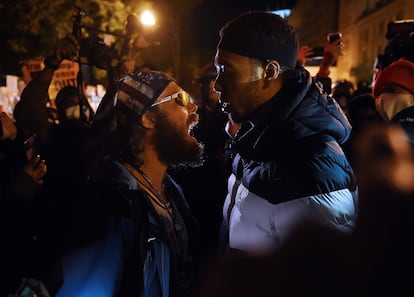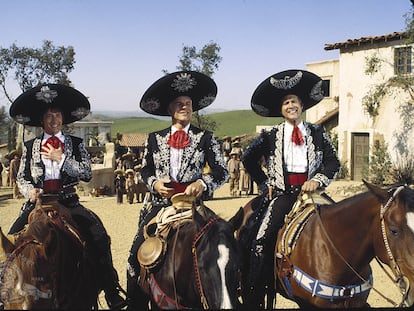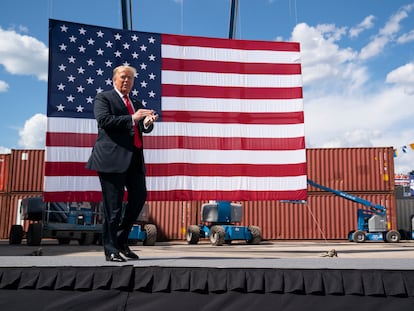The winner of the US election? Polarization
Don’t expect political intolerance to subside anytime soon. The US elections are just the latest example of the divisiveness that is weakening the world’s democracies

This election confirmed that the United States is a typical 21st-century democracy. That is to say, a politically torn country.
Profound political divisions now plague most of the world’s democracies. They are becoming so extreme that many citizens define their political identity in contrast to “the other side.” Deep, automatic intolerance toward people who hold rival political ideas and preferences is the norm. Often, the anger and animosity toward those with clashing political views are such, that opponents are not even accepted as legitimate political actors. Naturally, the more polarized a country is, the more difficult it is to govern.
The hope often was that elections would clarify which side won and thus calm the political waters. Voters would give one of the parties a wide majority and a mandate thus allowing them to govern. Sadly, this happens less and less often. Rather than reducing polarization, election campaigns exacerbate it. Instead of serving to calm tension and unite the country, elections now boost radicalization.
Political divisions are becoming so extreme that many citizens define their political identity in contrast to ‘the other side’
Elections also quantify the political rift that divides a society and provide the exact numbers of people who support each side. Polarized democracies have difficulty forming governments, keeping the alliances that they cobble together in order to govern and making policy decisions that, while necessary, are also controversial.
This political reality has gone global. Most recently we have seen the dire consequences of polarization in Spain, Italy, the United Kingdom, Greece, Israel, Poland, Brazil, Peru, Chile, Indonesia, Malaysia, South Africa, Nigeria and Tunisia, just to name a few examples.
In all these countries, society appears to be suffering from a sort of autoimmune disease, as a part of the political body expends massive resources on waging war with itself. This is not to say that polarization is a new phenomenon. It has always existed. Indeed, the clash between contrasting ideas is an immanent part of democracy. What is different today is how widespread, ingrained and intense polarization has become. Chronic political dysfunction and paralyzing policy gridlock are becoming the norm. The US elections are just the latest and most revealing example of this debilitating political disease.
To what do we owe this fragmenting of societies into disparate groups that can’t stand each other? The increase in economic instability and feelings of widespread injustice are undoubtedly partially to blame. The popularity of social media, and the crisis of journalism and traditional media also encourage it. Services such as Twitter or Instagram stimulate communication through short messages. Such brevity fosters extremism, since the shorter the message, the more radical it must be in order for it to circulate widely. In social media, there is no space, no time and no patience for shades of gray, ambivalence, nuances, accuracy, or the possibility that people with conflicting views might find common ground. Everything is black or white. And, naturally, this favors the sectarians and makes it more difficult to reach a consensus.
Instead of serving to calm tension and unite the country, elections now boost radicalization
But there is more. Polarization doesn’t just result from resentments caused by economic hardship or the pugnacity spurred by social media. Anti-politics – the total rejection of politics and traditional politicians – is another important driver. Political parties must now face a plethora of new competitors (“movements,” “waves,” “factions,” NGOs) whose agenda is based on the repudiation of the past and on tactics that foster intransigence. Ironically, to be successful at the ballot box, traditional political parties must now adopt positions shaped by anti-politics. Donald Trump is an iconic – albeit paradoxical – example of this phenomenon. A member of the world’s richest elite, who has prospered by manipulating the system, managed to become the leader of those “left behind” by that very system.
Another factor that fuels polarization is identity. It has become increasingly important for people to belong to political groups in which they identify with their fellow participants regardless of whether this identity is religious, ethnic, regional, linguistic, sexual, generational, rural, urban and so on. The assumption is that the identity that binds adherents to a political group generates similar interests and preferences. As identity tends to be more permanent and less fluid than “normal” political positions, this type of political group finds it more difficult to make concessions on matters that concern the identity of its members. This makes them more rigid, since radicalism and polarization often go together.
As we know, there are also foreign players, often sponsored by governments, that specialize in using social media to exploit and deepen the wedges that already exist in other countries and thus create new divisions and sow chaos.
Political polarization is not going to abate any time soon. Many of its causes are powerful and unstoppable. This year’s elections in the United States are just the latest example of how it is weakening the world’s democracies.
Twitter @moisesnaim
Tu suscripción se está usando en otro dispositivo
¿Quieres añadir otro usuario a tu suscripción?
Si continúas leyendo en este dispositivo, no se podrá leer en el otro.
FlechaTu suscripción se está usando en otro dispositivo y solo puedes acceder a EL PAÍS desde un dispositivo a la vez.
Si quieres compartir tu cuenta, cambia tu suscripción a la modalidad Premium, así podrás añadir otro usuario. Cada uno accederá con su propia cuenta de email, lo que os permitirá personalizar vuestra experiencia en EL PAÍS.
¿Tienes una suscripción de empresa? Accede aquí para contratar más cuentas.
En el caso de no saber quién está usando tu cuenta, te recomendamos cambiar tu contraseña aquí.
Si decides continuar compartiendo tu cuenta, este mensaje se mostrará en tu dispositivo y en el de la otra persona que está usando tu cuenta de forma indefinida, afectando a tu experiencia de lectura. Puedes consultar aquí los términos y condiciones de la suscripción digital.
More information
Últimas noticias
Most viewed
- Pablo Escobar’s hippos: A serious environmental problem, 40 years on
- Reinhard Genzel, Nobel laureate in physics: ‘One-minute videos will never give you the truth’
- Why we lost the habit of sleeping in two segments and how that changed our sense of time
- Charles Dubouloz, mountaineering star, retires at 36 with a farewell tour inspired by Walter Bonatti
- The Florida Keys tourist paradise is besieged by immigration agents: ‘We’ve never seen anything like this’











































